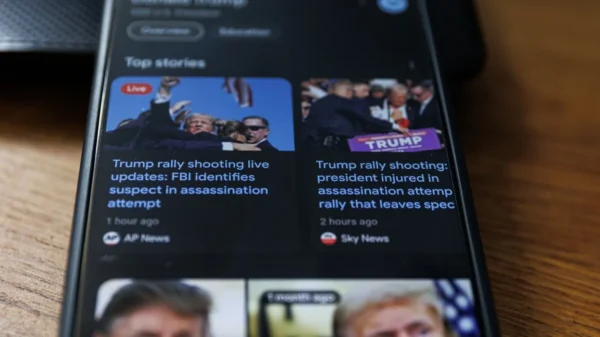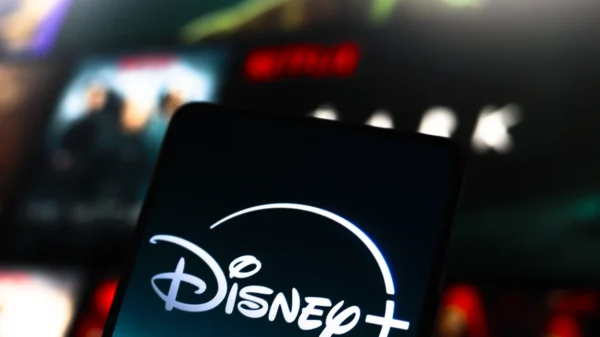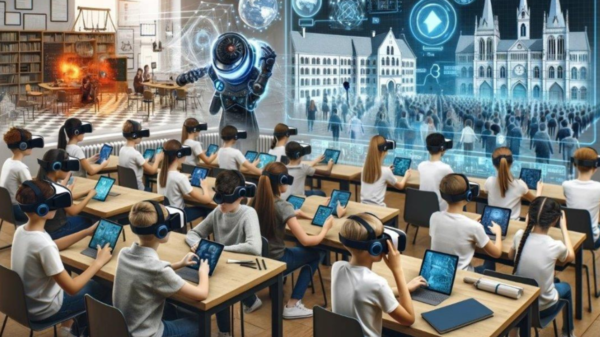“Step beyond screens into the immersive world of the Metaverse, where brands are reshaping marketing like never before.”
Key Takeaways:
- The metaverse merges the real and digital worlds, transforming how brands connect with people.
- Personalization and avatars deepen engagement, making experiences more immersive.
- Gamification boosts involvement with challenges, rewards, and interactive quests.
- Virtual communities and social interactions amplify brand connections.
In an era where the lines between reality and the digital realm continue to blur, a new phenomenon has emerged, ushering in a paradigm shift in marketing. It’s called the metaverse, a term that resonates with science fiction but is very much a tangible reality shaping the future of brand engagement. Imagine a space where you can step beyond the confines of your screen, immersing yourself in a 3D universe where interactions feel as genuine as those in the physical world. This is the Metaverse—a sprawling, interconnected web of virtual worlds revolutionizing how brands connect with their audiences.
The concept of the metaverse isn’t confined to science fiction novels or futuristic movies; it’s a dynamic and evolving landscape where brands are staking their claim. Exploring how brands across industries are creatively leveraging this immersive space to engage with their customers in once unimaginable ways.
The metaverse isn’t merely a playground for gamers or tech enthusiasts; it’s a canvas where brands reimagine their marketing strategies. From fashion houses to automotive giants, companies are transcending the boundaries of the physical world and crafting unparalleled experiences for their audiences. We’ll unravel the stories behind iconic brands that have ventured into the metaverse, turning pixels into profit and avatars into loyal customers.
The Metaverse: Bridging Real and Virtual
In an age defined by technological marvels, there’s a new frontier captivating the imagination of marketers and consumers alike: the metaverse. Far beyond a buzzword, the metaverse represents a transformative shift in how we perceive and interact with digital spaces. In this exploration, we’ll unravel the profound concept of the metaverse and delve into its potential as a revolutionary marketing arena.
Understanding the Metaverse
Defining the Metaverse: At its core, the metaverse can be understood as an interconnected network of virtual worlds, seamlessly blending the real and digital realms. Think of it as a 3D universe where people transcend the confines of screens and devices to inhabit avatars, engage in activities, and forge connections akin to real-life interactions. It’s a space where reality and imagination converge, creating an immersive and limitless environment.
Immersive Nature: One of the defining aspects of the metaverse is its immersive nature. Users don’t just interact with a screen; they inhabit a digital landscape. Imagine attending a concert where you’re not a passive spectator but an active participant, dancing alongside real and virtual friends. The metaverse bridges the gap between the tangible and the intangible, amplifying experiences and sensations in ways that traditional platforms cannot.
Multi-Dimensional Experiences: In the metaverse, interactions extend beyond visual and auditory stimuli. Users can explore, touch, create, and trade within these digital domains. Whether attending lectures, shopping for virtual goods, or collaborating on projects with colleagues worldwide, the metaverse offers multi-dimensional experiences that mimic and often transcend real-world activities.
Virtual Worlds as Marketing Arenas
A Unique Brand Interaction Platform: The allure of the Metaverse for brands lies in its capacity to revolutionize consumer engagement. Imagine a scenario where potential customers don’t just read about a product; they step into a virtual store, interact with the item, and even visualize how it fits into their lives. Brands leverage this potential to create memorable experiences beyond the transactional.
Comparing to Traditional Channels: To comprehend the impact of the metaverse on marketing, it’s essential to contrast it with traditional online channels. While websites and social media platforms provide valuable touchpoints, the metaverse offers an entirely new level of immersion and engagement. Instead of scrolling through product images, users can inspect them from every angle, try them on virtually, and even share the experience with friends in real-time.
In this rapidly evolving digital landscape, the metaverse bridges the tangible and the digital. It’s a canvas on which brands can paint experiences that transcend the limits of screens, sparking connections and conversations that are both innovative and deeply resonant. As we venture deeper into this brave new realm, we’ll uncover how brands are redefining marketing, transforming passive consumers into active participants, all within the dynamic expanse of the metaverse.
Brands in the Metaverse: Examples and Case Studies
As the metaverse continues to weave itself into the fabric of our digital lives, brands across industries seize the opportunity to reimagine their strategies and connect with audiences in new and exciting ways. Let’s delve into some compelling case studies that exemplify how diverse brands are leveraging the immersive power of the metaverse.
Fashion and Lifestyle Brands
Gucci’s Virtual Fashion Show: The world-renowned fashion house Gucci took the virtual stage by storm with a unique approach to showcasing their latest collections. Instead of traditional catwalks, Gucci orchestrated a virtual fashion show within the metaverse. This digital spectacle allowed users to witness models donning exquisite creations in a truly immersive environment, blurring the line between reality and fantasy.
Adidas’ Virtual Sneaker Launch: In the fast-paced world of sneaker releases, Adidas harnessed the potential of the Metaverse to create an innovative experience. Enthusiasts were invited to try on virtual versions of upcoming sneakers. This virtual fitting room provided an interactive preview and allowed users to visualize how the sneakers would complement their style before making a purchase.
Gaming and Entertainment Brands
Fortnite’s Collaborations: Fortnite has become more than just a gaming platform—an entertainment hub within the Metaverse. Brands like Travis Scott and Marshmello have hosted virtual concerts, drawing millions of players into live, interactive performances. Collaborations like these showcase the versatility of the metaverse and enable brands to organically integrate into users’ leisure activities.
Disney’s Virtual Theme Park: Disney, known for its enchanting theme parks, has taken its magic to the metaverse. By creating virtual renditions of iconic attractions, Disney offers users the chance to explore these beloved spaces from the comfort of their own devices. This extension of the theme park experience opens up a new dimension of engagement for Disney enthusiasts worldwide.
Tech and Automotive Brands
Tesla’s Virtual Showroom: The automotive industry has embraced the metaverse, with brands like Tesla setting the pace. Tesla’s virtual showroom allows users to explore its electric vehicles from every angle, even stepping inside to experience the interior. This caters to potential buyers and aligns with Tesla’s innovative image, offering a glimpse into the future of car shopping.
HTC’s Virtual Reality Experience: Tech giant HTC ventured into the metaverse by offering a remarkable 3D test drive for new car models. By creating a virtual reality environment, users can virtually sit in the driver’s seat, explore the car’s features, and even take it for a digital spin. This interactive experience transforms car browsing into an engaging adventure.
These case studies exemplify the remarkable diversity of approaches brands take within the metaverse. As fashion, gaming, entertainment, tech, and automotive industries converge in this immersive landscape, they’re redefining marketing strategies and user experiences, blurring the boundaries between imagination and reality. The metaverse is not just a canvas; it’s a living testament to the boundless creativity that brands bring to the table as they navigate this uncharted digital territory.
Strategies for Successful Metaverse Marketing
In the dynamic realm of the metaverse, successful marketing hinges on the art of crafting immersive experiences that not only captivate but also resonate deeply with users. Let’s uncover the strategic pillars underpinning effective metaverse marketing and explore how brands leverage these tactics to forge genuine connections in this new digital frontier.
Personalization and User Engagement
Customizing User Experiences: At the heart of Metaverse marketing lies the ability to tailor experiences to individual users. Brands harness user data to create hyper-personalized interactions, allowing users to feel seen and understood in this digital landscape. Whether recommending virtual spaces based on interests or curating virtual experiences, personalization amplifies engagement and fosters a sense of belonging.
Utilizing Avatars and Customization: Avatars, the digital alter egos of users, play a pivotal role in personalization. Brands enable users to customize their avatars to reflect their personalities and preferences. This customization enhances self-expression and serves as a means for brands to connect with users on a personal level, blurring the lines between their virtual and real selves.
Gamification and Interactive Experiences
Incorporating Gamified Elements: Gamification is the secret sauce that infuses playfulness into Metaverse marketing. Brands are weaving elements of competition, exploration, and achievement into their campaigns, transforming passive engagement into active participation. From virtual scavenger hunts to challenges with rewards, gamification keeps users invested, fostering a sense of accomplishment and camaraderie.
Creating Interactive Quests and Challenges: Metaverse marketing isn’t about delivering passive content but about co-creation. Brands are crafting interactive quests and challenges that require users to engage, think, and collaborate. These immersive experiences deepen user involvement and tap into the innate human desire for exploration and discovery, breathing life into campaigns.
Social Connectivity and Community Building
Building Virtual Communities: In the metaverse, the concept of community takes on a new dimension. Brands are creating virtual spaces that serve as hubs for like-minded individuals to congregate. Whether it’s a fashion enthusiasts’ lounge or a gaming guild’s headquarters, these spaces foster a sense of belonging and camaraderie, driving deeper engagement.
Enabling Social Interactions: The essence of human interaction isn’t lost in the metaverse; it’s reimagined. Brands facilitate social connections through avatars, enabling users to communicate, collaborate, and celebrate virtually. From attending virtual parties to collaborating on projects, users bond in ways that transcend traditional digital channels.
Challenges and Future Outlook
As brands venture into the metaverse to revolutionize marketing strategies, they encounter unprecedented opportunities and intricate challenges. Navigating this dynamic landscape requires a keen understanding of the hurdles that lie ahead and the potential that awaits on the horizon.
Technological Barriers and Accessibility
Addressing Hardware and Software Requirements: The Metaverse demands technological prowess. Brands must consider users’ diverse hardware and software prerequisites to access virtual worlds. From high-performance devices to stable internet connections, ensuring seamless access is imperative to prevent fragmentation and exclusion.
The Need for User-Friendly Interfaces: The success of the metaverse hinges on intuitive user experiences. Brands must invest in creating interfaces that bridge the gap between technological complexity and user simplicity. Striking this balance guarantees that the metaverse is accessible to a wider audience, transcending tech-savvy users and reaching a broader demographic.
Privacy and Ethical Concerns
Balancing User Data Collection: In an era where data fuels personalization, brands must distinguish between delivering tailored experiences and respecting user privacy. Striking this balance requires transparent data collection practices that empower users to make informed decisions about sharing their personal information.
Ensuring Responsible Data Usage: The Metaverse’s immersive nature amplifies concerns about data usage. Brands must operate ethically, ensuring that user data collected within virtual environments is used responsibly and doesn’t compromise user trust. Striving for data security and adhering to stringent privacy regulations is paramount.
The Future of Metaverse Marketing
Predictions for Growth and Evolution: The Metaverse’s impact on marketing is just beginning to unfold. Industry experts foresee exponential growth, with brands increasingly integrating virtual experiences into their strategies. Virtual shopping, interactive events, and even employment within the metaverse are poised to become commonplace, transforming how brands engage with consumers.
Speculating on Innovations and Trends: Innovation is the lifeblood of the metaverse. As technology advances, we can anticipate innovations that merge the physical and digital realms even further. Augmented reality (AR) and virtual reality (VR) devices will likely become more accessible and sophisticated, enabling brands to create more immersive and engaging experiences.
Conclusion
The metaverse has emerged as a seismic force that is reshaping the landscape of modern marketing. It’s not merely a trend but a transformative phenomenon blurring the lines between the physical and the digital, the real and the imagined. As we’ve journeyed through the immersive realms of 3D virtual worlds and witnessed how brands are harnessing this new frontier, it’s evident that the impact is profound and far-reaching.
Brands that recognize the potential of the metaverse are poised to redefine their relationship with consumers. This digital expanse isn’t just an additional channel; it’s a paradigm shift that demands a recalibration of strategies and perspectives. The metaverse beckons brands to transcend conventional marketing and embrace a new era of engagement—dynamic, interactive, and intensely personal.

















































